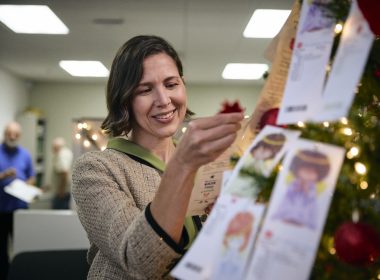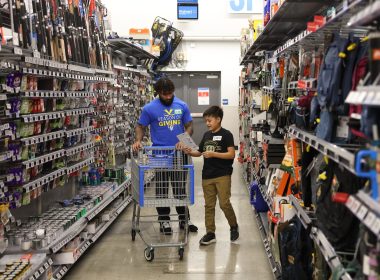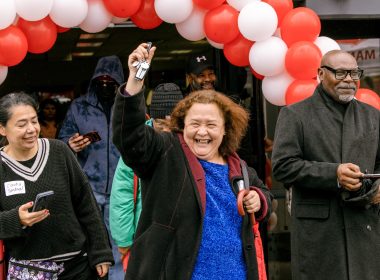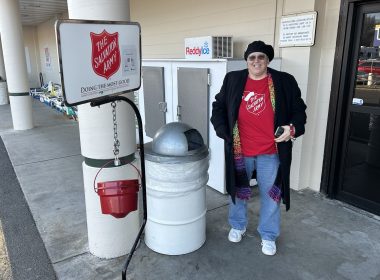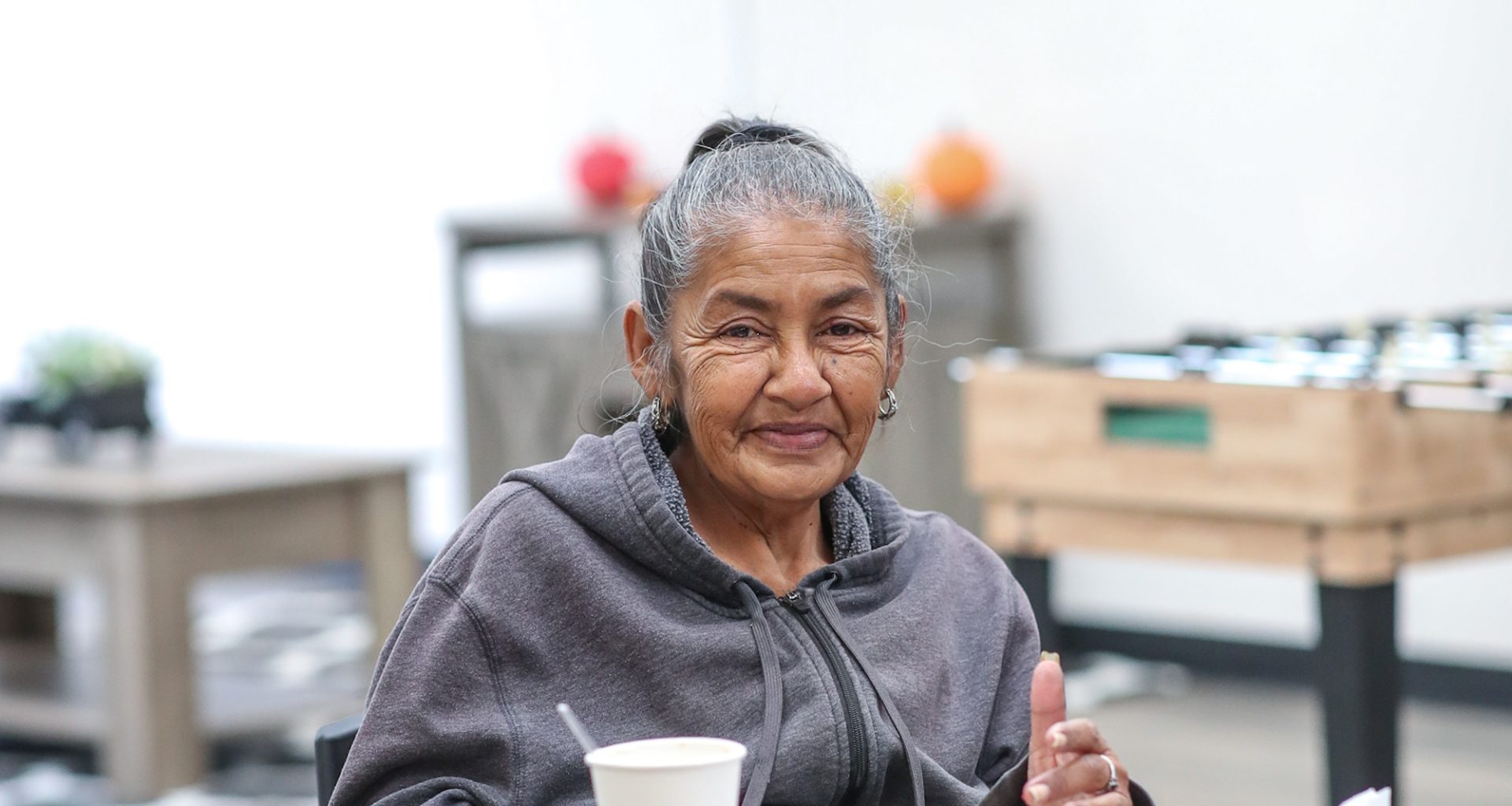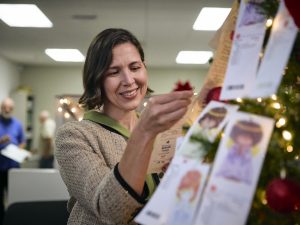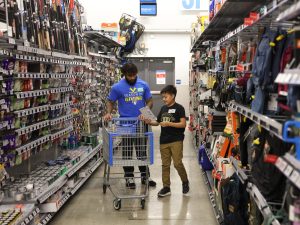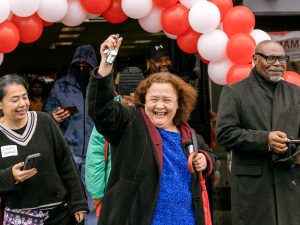Desiree Carvalho never saw it coming.
“I’ve worked all my life,” she said. “It’s all new to me.”
At 66, she’s experiencing homelessness for the first time.
For now, she resides at The Salvation Army Haig and Isabel Berberian Shelter and Transitional Living Center in Modesto, California.
After 26 years of marriage, Carvalho and her husband divorced, and Carvalho said she was left with nothing. She worked part-time, and for a while, she rented a room in a house with several other women. She said after several months, with no notice, she was told to leave. A friend told her about the Berberian Shelter.
“They got me right in,” she said. “They’ve been treating me really well, doing what they can for me.”
It turns out Carvalho isn’t alone. In fact, she represents a growing trend among older adults: homelessness.
Nearly 1 in 4 unhoused individuals are over age 55, according to the National Alliance to End Homelessness (NAEH) annual Point-In-Time homeless count from January 2023.
“When we first started getting the data on homelessness back in the 1990s, it showed that older people were underrepresented among the homeless population,” said Steve Berg, NAEH Chief Policy Officer. “And everybody gave credit to Social Security as the reason for that. It’s the one population that gets support from the government.”
And yet the Alliance estimates the number of unhoused older adults will almost triple by 2030, from 40,000 to 106,000 people.
Berg said the main problem is Social Security no longer provides older adults with the security it once did.
Over time, as the cost of living increased, he said, Social Security didn’t emphasize how much people with lower incomes pay for housing.
What is Social Security?
Social Security is a program that provides financial support for Americans throughout their lives. It offers four main types of benefits: Retirement benefits, Social Security Disability Insurance (SSDI), Supplemental Security Income (SSI), and Benefits for spouses and other survivors of a family member who has died.
Social Security replaces a percentage of a worker’s pre-retirement income based on their lifetime earnings. In February 2023, the average Social Security retirement benefit was $1,782 per month.
SOURCE: Social Security Administration
“They’re paying a very high percentage of their income for housing,” Berg said. “And housing has gone up faster than other costs of living steadily for decades. I think it’s gotten to the point where Social Security is no longer an automatic safeguard against homelessness…The long-term trend is that rents for a modest apartment have gone up faster than the wages in a modest job,” he said. “So people can’t keep up.”
And that means, Berg said, social services are critical to helping older individuals facing homelessness.
“In many communities, there just aren’t sufficient programs and resources to deal with the rising number of homeless people,” he said. “And it’s important that the older people who are most likely to become homeless have access to these programs.”
In Modesto, Jim Stokes, Director of The Salvation Army Berberian Shelter, said he’s been talking about this trend for a while.
“The actual demographics of our shelter are largely both disabled folks and seniors,” Stokes said. “Housing is expensive and if your only income is SSI [Supplemental Security Income] and housing vouchers aren’t within reach, you end up at our shelter because SSI isn’t enough to cover rent. Disability payments aren’t usually enough to cover rent either.”
According to Berberian Shelter data, the average client age has steadily increased since 2019. As of March 2024, 33 percent of Berberian guests are 55 or older.
If you can’t keep up under normal circumstances, any life crisis—as Carvalho experienced—can make it untenable to maintain your home.
According to the NAEH, those who first experience homelessness at age 50 and older typically have experienced a financial or health crisis, lost a loved one, or otherwise experienced a relationship breakdown with the income-earner, or experienced barriers to continued ability to work.
And to Berg’s point about social services, individuals facing a crisis may not know what resources are available.
“It’s a good experience. I can go to my caseworker and talk to her. They’re very caring here.”
Desiree Carvalho
“The face of homelessness has changed and includes more and more seniors,” said Major Darren Stratton, Corps Officer of The Salvation Army Modesto Corps and Red Shield Community Center. “The Modesto Salvation Army is working to identify ongoing funding sources for its sheltering operations—including services to our seniors—to ensure the Berberian Shelter continues to meet the needs of all guests entrusted to our care.”
In addition to noting the rising age of guests at the Berberian Shelter, staff observed more seniors walking and stopping to rest near the Red Shield Center in recent years. Realizing the Modesto community lacked resources for its older residents, The Salvation Army worked to fill the gap.
With funding from Sutter Health, The Salvation Army opened a senior center at the Red Shield. The funds covered staffing, including a driver for an ADA-compliant vehicle and a cook who prepares breakfast and lunch for attendees. Stratton said that while shelter residents attend the center, it is open to the larger community. Recently, Sutter Health provided an additional two-year grant of $300,000 to continue the program.
Nearby, at the Berberian Shelter, Carvalho continues to work with her case manager to find permanent, affordable housing, but it’s challenging. The average monthly rent for an apartment in Modesto is currently $1,659 while the average Social Security benefit is $1,706.
Meanwhile, Carvalho has a safe place to stay, for as long as she needs it.
“It’s a good experience,” she said. “I can go to my caseworker and talk to her. They’re very caring here.”
Do Good:
- Interrupt the free flow of junk (e)mail with something good. Get the Do Good Digest. Join 26k+ people who care and get weekly inspiration sent right to your inbox.

